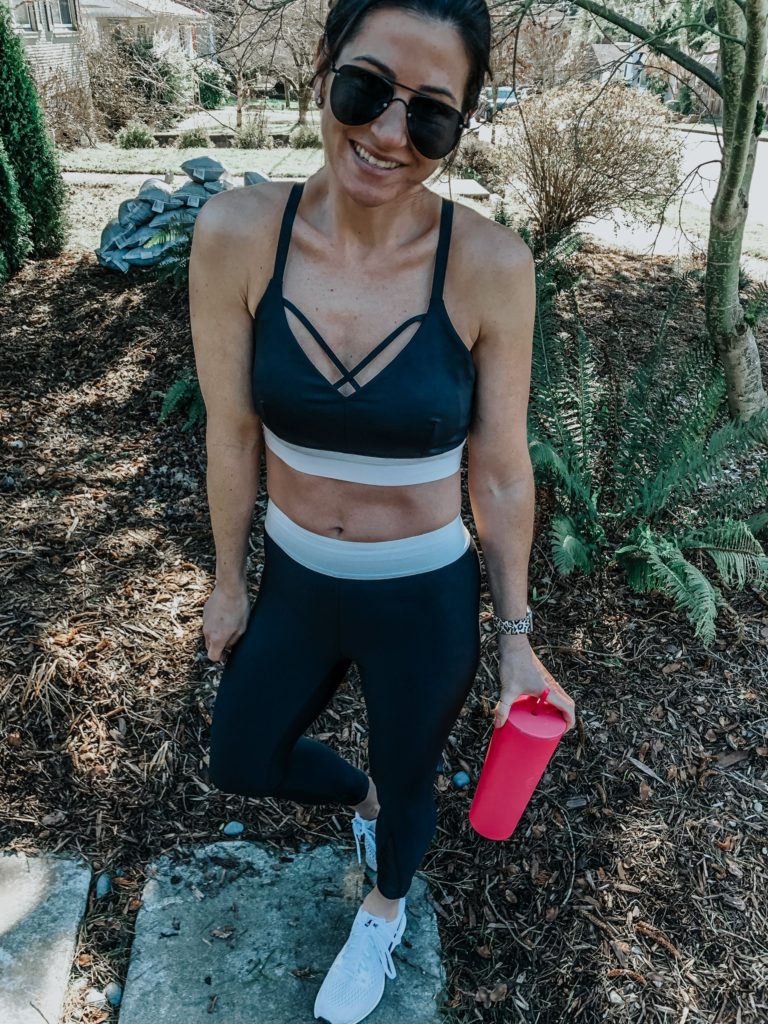
Do you remember the days of going to 24 Hour Fitness and spending an hour or more on the elliptical reading US Weekly…then grabbing a Jamba Juice and feeling like you were a fitness god…just me?? Well, times have definitely changed for me and my fitness routine now that I have a better understanding of how my body functions metabolically.
I often get asked what workouts I’m doing and it’s hard to say because I don’t have a set routine, but I keep it varied…that’s KEY for me! It’s so easy to get caught up in the cardio mindset… the more cardio the better. I used to have that mentality about working out, but now that my hormones and metabolism are changing as I get older I need to be more savvy with how I exercise.
For me, exercise is the number one way I manage my anxiety and movement helps me feel calm yet energized throughout the day. Being a college athlete, unless I was about to puke I wans’t working hard enough…that was always my mindset when it came to exercise. So, in the past this has made it difficult for me to tone down my activity and/or take rest days.
These days I’ve found low impact ways to move my body that might not break a crazy sweat or jack up my heart rate, but are necessary to balance out my more intense workouts and keep cortisol levels in check.

For me, an intense workout is something that leaves me super sweaty and breathless. Long distance running, spin classes, and Orange Theory Fitness classes usually do the trick. I’ve started to limit these workouts to 2-3 x week max. I’ve started adding in more yoga, Lagree Method pilates, barre, and walking into my routine along with 1-2 rest days. I’ve learned how important rest days are for allowing your body time to recover and rebuild, so you’re actually getting strong (not weaker) from your workouts.
Intense workouts every day of the week (I’m talking super sweaty workouts like running, HIIT, and cycle) raise your cortisol levels and doesn’t allow your body to recover. High cortisol puts your body in muscle breakdown mode instead of muscle-building mode plus chronic levels of high cortisol have significant adverse health effects.
Overtraining releases an excess of cortisol. Studies show that high intensity workouts (such as HIIT) ARE effective for fat loss, but there is such a thing as overtraining which could have adverse outcomes (depression, fat storage, injury, illness, fatigue).

I plan to do a more in-depth post on cortisol as this is something I have been researching more and more and finding so interesting… so please leave your questions below.
xx,
Alix

I found this post really helpful!! I’ve been needing to switch things up a bit, as I see my fitness and weight loss goals have come to a halt. I didn’t know the stuff about cortisol, and now that I do, I can see why I’ve been struggling the last 3 weeks.
Thank you so much for posting this, Alix. I look forward to reading the next one to learn more about it.
Thanks Britt! I’m glad you found it helpful and def working on a more in depth cortisol post!